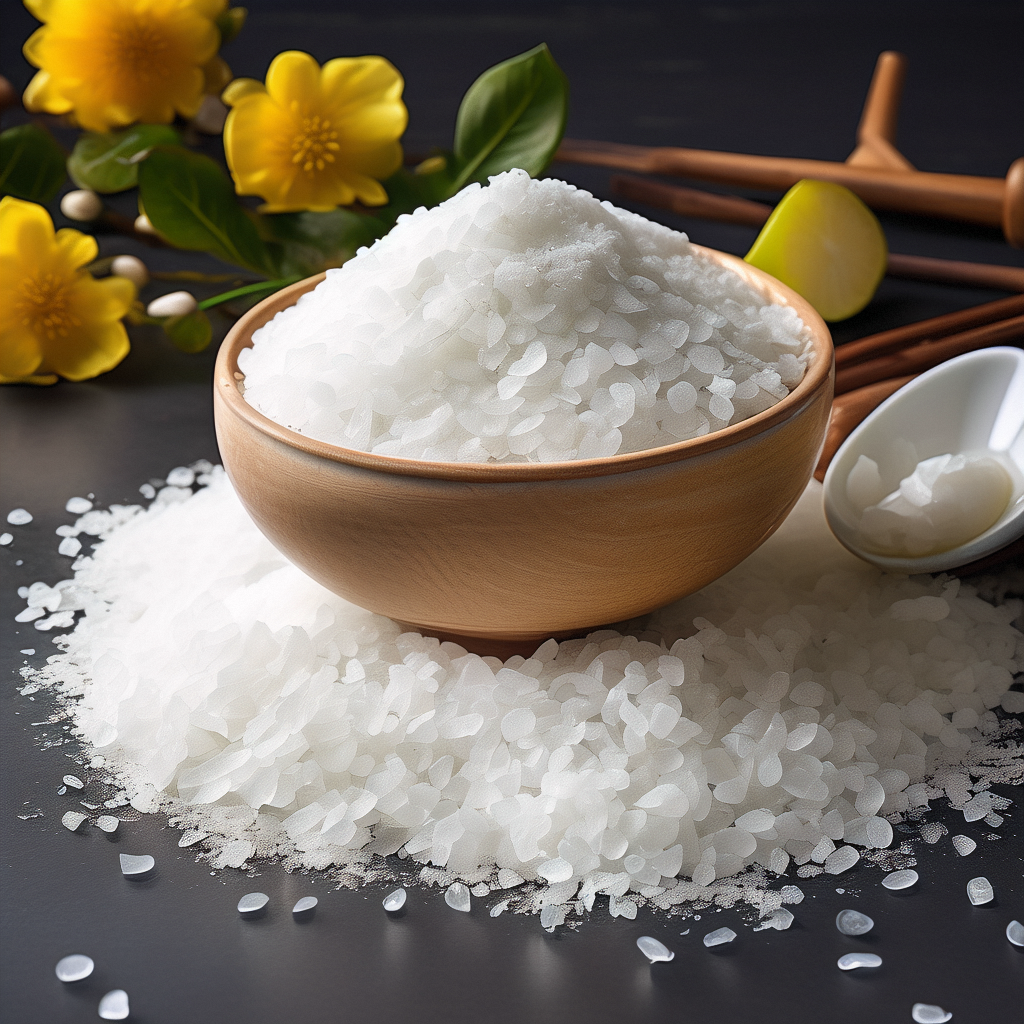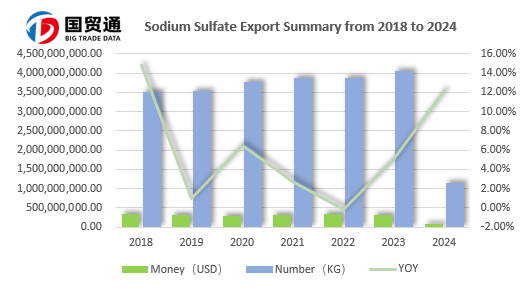
China Sodium Sulfate (HS: 28331100) Latest Annual Summary
“According to customs data, from January 2018 to March 2024, China exported a total of 23,711,257,167 kilograms of Glauber's salt.”
Glauber's salt, scientifically known as sodium sulfate (Na₂SO₄), also referred to as anhydrous mirabilite or anhydrous sodium sulfate, is an inorganic compound that appears as a white, odorless, bitter-tasting crystal or powder. Glauber's salt has extensive applications in industrial and chemical fields. It is used as an auxiliary in textile dyes, in the glass industry, paper manufacturing, detergents and cleaning agents, as a component in fertilizers in agriculture, as an additive in drilling fluids for oil extraction, and in water treatment for softening hard water.
China, as a significant producer and exporter of Glauber's salt, has a notable impact on global trade dynamics. According to customs data, from January 2018 to March 2024, China exported a total of 23,711,257,167 kilograms of Glauber's salt. The annual export volume increased from 3.5 billion kilograms in 2018 to 4.057 billion kilograms in 2023, showing a stable upward trend overall. However, the export value decreased from $330 million in 2018 to $310 million in 2023. Although the decline is not substantial, the changes in export volume and export value are not completely synchronized, indicating fluctuations in the unit price. These fluctuations could be influenced by factors such as international prices, exchange rate changes, and cost variations.

China is not only the country with the largest reserves of Glauber's salt but also a major producer and exporter, with large-scale production capacity and a dominant position in the global market. According to customs data, in 2023, China's exports of Glauber's salt were primarily concentrated in Asia and Latin America, accounting for 53.75% and 30.65% of the total export volume, respectively. The main export destinations included Bangladesh, Vietnam, Brazil, Colombia, Indonesia, Thailand, the Philippines, and Malaysia. Among these, Brazil and Colombia saw significant increases in their imports from China in 2023, with year-on-year growth rates of 40.43% and 42.28%, respectively, compared to 2022.
The global sodium sulfate market generally maintains a stable balance between supply and demand, with an overall high level of production and sales ratio, providing a steady market environment for the export of Chinese sodium sulfate. As China's sodium sulfate industry continues to grow and strengthen, along with enhancements in product quality and market share, as well as the regulatory and promotional effects of environmental protection regulations on the industry, it is anticipated that China's sodium sulfate will further expand its share in the international market in the future, positively influencing the global trade landscape.
Furthermore, the exploration of emerging markets represents another vital direction for the export of Chinese sodium sulfate, indicating that Chinese suppliers are not only focusing on traditional markets but also actively seeking new areas of growth to capitalize on opportunities presented by global economic shifts and diversifying demands.
For exporters, it is crucial to focus on changes in market demand, refine their export strategies, and reinforce a diversified market layout. To obtain the latest specifics regarding the Chinese sodium sulfate export market, including major export countries, export volumes, and export growth rates, it is advisable to consult the most recent industry reports or customs statistical data. Such data can provide a more precise reflection of current dynamics and trends in the export market.
As China's first data company, Guomao Tong offers customs data for imports and exports spanning over 80 countries from 2010 to the present, enabling online precise analysis of import and export market distributions, detailed transaction information of importing and exporting enterprises, specific volume-price analyses, supply cycle details, among others. It provides reliable and basis data for major foreign trade enterprises and industry consulting firms.
(This article is an original creation by Guomao Tong. Please indicate the source when reposting.)














